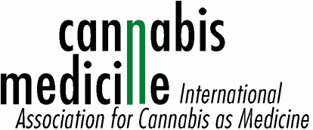Programme of the IACM 5th Conference on Cannabinoids in
Medicine on 2-3 October in Cologne, Germany
Israel: Significant increase in the number of patients who are
allowed to use cannabis for medicinal purposes
Science: The development of the number of new schizophrenia
cases in the UK does not support the hypothesis that cannabis use
increases schizophrenia risk
USA: Measure of medicinal use of cannabis introduced to
House of Representatives
1. Israel: Significant increase in the number of patients who are
allowed to use cannabis for medicinal purposes
About 700 patients are currently allowed to use cannabis for
medicinal purposes and it is expected that the number surpasses
1,000 at the end of this year. The first patients received cannabis
in 1999 after the Health Ministry legalized the use of the drug by
severely ill patients. “I issue 40 new prescriptions every month,
with an average prescription calling for 100 grams per patient per
month,” says Dr. Yehuda Baruch, the head of the psychiatric
hospital Abarbanel in Bat Yam. Baruch is the only physician
appointed by the Health Ministry to issue approvals for cannabis.
The Health Ministry committee that decided to permit the
medicinal use of cannabis in 1999 stipulated that the drug be given
only to patients with extreme symptoms.
Until 2005 the prescriptions for medicinal cannabis were given
only to ten patients. The ministry allowed them to cultivate up to
ten cannabis plants, and to possess up to 200 grams of cannabis.
In addition, patients may get cannabis for free from a grower who
remains anonymous and is allowed to deliver cannabis to patients.
There are several volunteers who are allowed to transport the
drug to patients all across the country. Today cannabis is
prescribed by Baruch for a broad array of diseases, among them
multiple sclerosis, chronic pain, Tourette syndrome and cancer.
The producer of cannabis doesn’t receive any payment from the
state for the production of the cannabis, and the patients don’t pay
for it either. However, experts say that it is clear to everyone that
this cannot continue, in light of the growing demand and the cost
of production. Currently it is unclear who will have to pay for
cannabis then. Baruch supposes that patients will have to pay
about 5 or 10 shekel (about 0,9 to 1,8 Euros) per gram in the
future.
[(Source: Haaretz of 27 June 2009)
>http://www.haaretz.com/hasen/spages/1094284.html]
2. Science: The development of the number of new schizophrenia
cases in the UK does not support the hypothesis that cannabis use
increases schizophrenia risk
According to research of scientists at Keele University in
Staffordshire, UK, the incidence (the number of new diagnosed
cases) of schizophrenia in the years 1996 to 2005 does not support
the hypothesis that cannabis use increases the risk for the
development of schizophrenia or psychosis. For this study an
analysis of data from 183 practices in England, Wales, Scotland
and Northern Ireland was conducted. The study cohort comprised
almost 600,000 patients each year, representing approximately 2.3
per cent of the UK population aged 16 to 44. Between 1996 and
2005 the incidence of schizophrenia and psychoses were either
stable or declining.
A recently published study found that cannabis use increased
fourfold between 1972 and 2002 and 18-fold among people under
18 years of age. If the risk of schizophrenia is elevated 1.8-fold
among light users and 3.1-fold among heavy users as suggested
by another study, and assuming an elevated risk for 20 years, an
increase in schizophrenia incidence of 29 per cent would have
been expected between 1996 and 2005. Researches concluded
that “the causal models linking cannabis with
schizophrenia/psychoses are not supported by this study” and that
“the underlying causes of schizophrenia/psychoses remained
stable/declined over the study period.”
(Source: Frisher M, Crome I, Martino O, Croft P. Assessing the
impact of cannabis use on trends in diagnosed schizophrenia in the
United Kingdom from 1996 to 2005. Schizophr Res. 2009 Jun 26.
[Electronic publication ahead of print])
3. USA: Measure of medicinal use of cannabis introduced to House
of Representatives
Barney Frank, a member of the House of Representatives, has
introduced two pieces of legislation on cannabis to the House. The
first would change federal law to allow states to experiment with
medical cannabis without interference from the federal
government. And the second would drastically reduce penalties
for “personal possession” of cannabis.
The medical cannabis bill aims to fix a problem in the
classification of cannabis. Federal law always trumps state law,
and federal law says that cannabis is illegal, even for medical use.
Federal law also states that cannabis has no medical value, and
therefore even doctors who prescribe it are at risk of legal trouble
with the federal government for doing so. The first of Frank’s bills,
is titled “The Marijuana Patient Protection Act” and “would
prevent federal authorities from prosecuting pharmacies, growers
and users of medical marijuana in states where the use of the
substance for medical reasons is legal.”
(Sources: Press release by Barney Frank of 19 June 2009, [Huffington Post of 22 June 2009)
>http://www.huffingtonpost.com/chris-weigant/barney-frank- introduces-m_b_219263.html]
4. News in brief
Science: Osteoporosis
Variants within the gene that encodes the cannabinoid-2 receptor
have been shown to be associated with osteoporosis and low bone
mineral density. New research from the University of Bonn,
Germany, shows that variations of this gene are associated with
the strength of hand bones. (Source: Karsak M, et al. Hum Genet
2009 Jun 30. [Electronic publication ahead of print])
Science: Opiate dependence
According to animal research by a French group THC influences
the vulnerability to opiate use different in normally treated rats and
animals whose contact to their mother was interrupted after birth.
It worsened the vulnerability to opiates in normal animals, but
improved the deficits in maternal neglected rats. Authors noted
that “these findings point to the self-medication use of cannabis in
subgroups of individuals subjected to adverse postnatal
environment.” (Source: Morel LJ, et al.
Neuropsychopharmacology 2009 Jun 24. [Electronic publication
ahead of print])
Science: Macular degeneration
Age related macular degeneration is a cause of blindness and
retinal pigment epithelial cells play a key role in initiating and
developing of this disease. The macula is a central part of the
retina. Researchers of the University of Shanghai, China,
demonstrated that several synthetic cannabinoids acting on CB1
and CB2 receptors protected these cells. They concluded that the
“modulation of cannabinoid receptor tone warrants consideration
for future therapeutics strategies of ARMD.” (Source: Wei Y, et
al. Mol Vis 2009;15:1243-51.)
Science: Schizophrenia
Earlier animal research has shown that THC increases the rate of
dopamine release in the striatum (a brain region) leading to
vulnerability to psychosis. New research from the Hammersmith
Hospital in London, UK, shows that the administration of 10 mg
oral THC to 13 healthy volunteers did not result in a release of
significant amounts of dopamine. Scientists concluded that these
moderate THC doses do not result in significant dopamine release
and that their observations “challenge current models of striatal
dopamine release as the mechanism mediating cannabis as risk
factor for schizophrenia.” (Source: Stokes PR, et al. Neuroimage
2009 Jun 16. [Electronic publication ahead of print])
Science: Migraine
Researchers of the University of Manchester, UK, demonstrated
that variations in the gene encoding the CB1 receptor predisposes
to migraine. They compared 684 healthy controls with 195
migraine headache sufferers. (Source: Juhasz G, et al. Neurosci
Lett 2009 Jun 17. [Electronic publication ahead of print])
Science: Kaposi’s sarcoma
Researchers of the University of Catania, Italy, showed that a
synthetic cannabinoid (WIN 55,212-2), which binds both to the
CB1 and CB2 receptor decreases the viability of Kaposi’s
sarcoma cells. Kaposi’s sarcoma is a cancer that is often
observed in AIDS patients. (Source: Luca T, et al. Eur J
Pharmacol 2009 Jun 17. [Electronic publication ahead of print])
Science: Pain
According to research at the University of Miami, USA, the pain
relieving effects of the synthetic cannabinoid WIN 55,212-2 did
not undergo the development of tolerance within 7 days in a rat
model of neuropathic spinal cord injury pain. By contrast, the
efficacy of morphine decreased over the same treatment period.
(Source: Hama A, et al. J Rehabil Res Dev 2009;46(1):135-43.)
[International Association for Cannabis as Medicine (IACM)
>http://www.cannabis-med.org]
Am Mildenweg 6
D-59602 Ruethen
Germany
Phone: +49 (0)2952-9708571
Fax: +49 (0)2952-902651
Email: info@cannabis-med.org
If you want to be deleted from or added to the IACM-Bulletin
mailing list or if you want to change your e-mail address please
visit www.cannabis-med.org/english/subscribe.htm. You may choose
between different languages (English, German, French, Dutch,
Italian and Spanish).
The articles of the IACM-Bulletin can be printed, translated and
distributed freely for any non-commercial purposes, provided the
original work is properly cited.




 Creative Commons Attribution
Creative Commons Attribution